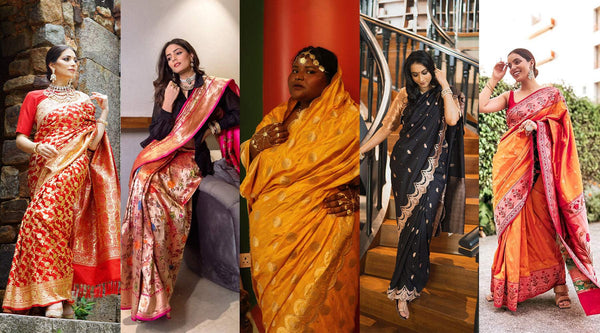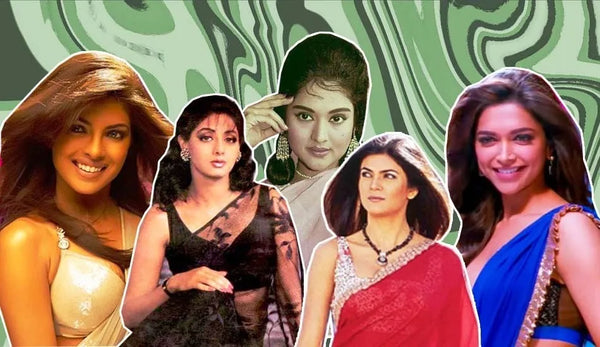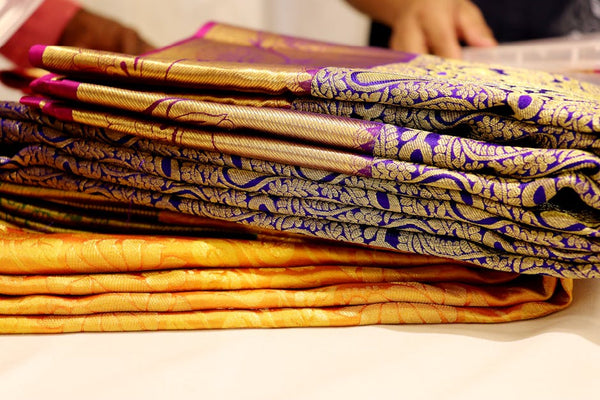
Different Saree Styles from Across India
India's cultural diversity is beautifully reflected in its traditional attire, with the saree standing out as a symbol of grace and elegance. Each region in India has developed its own unique draping style, adding a touch of local flavor to this timeless garment. In this article, we explore various saree draping styles from across India, offering insights into their origins and the occasions they are best suited for.
1. Nivi Style (Andhra Pradesh)
The Nivi style is the most commonly adopted saree draping style in India and has its origins in Andhra Pradesh. This draping style is characterized by pleats at the front and a pallu draped over the left shoulder.
- Occasions: Suitable for everyday wear, office settings, and casual events.
- Saree Suggestions: Lightweight sarees like cotton or chiffon work best for this style, allowing ease of movement.
2. Bengali Style (West Bengal)
The Bengali style of draping is distinctive with its broad pleats and the pallu that comes from the back to the front, draped over both shoulders.
- Occasions: Popular during Durga Puja and Bengali weddings.
- Saree Suggestions: Opt for traditional Bengali sarees such as the Tant, Baluchari, or Dhakai Jamdani for an authentic look.
3. Gujarati Style (Gujarat)
In the Gujarati style, also known as the Seedha Pallu style, the pallu is draped over the right shoulder and spread out in the front.
- Occasions: Commonly worn during festive occasions and weddings.
- Saree Suggestions: Heavily embroidered or embellished sarees are ideal, as the pallu is a focal point in this style.
4. Maharashtrian Style (Maharashtra)
The Maharashtrian style, also known as Nauvari or Kasta, involves draping a nine-yard saree without a petticoat, giving it a dhoti-like appearance.
- Occasions: Worn during traditional ceremonies, religious events, and cultural festivals.
- Saree Suggestions: Nine-yard silk sarees in vibrant colors are preferred for this traditional drape.
5. Tamilian Style (Tamil Nadu)
The Tamilian draping style, similar to the Madisar, uses a nine-yard saree and is draped in a unique way that forms pleats at the back.
- Occasions: Typically worn by Brahmin women during religious ceremonies and weddings.
- Saree Suggestions: Silk sarees like Kanjivaram with rich colors and zari work are commonly used.
6. Assamese Style (Assam)
The Mekhela Chador is a two-piece saree ensemble that forms the traditional attire of Assam, where the mekhela is draped as a skirt and the chador as a pallu.
- Occasions: Worn during Bihu festivals and Assamese weddings.
- Saree Suggestions: Choose traditional silk sarees like Muga or Assam silk for an authentic appearance.
7. Kerala Style (Kerala)
The Kerala style, also known as the Kasavu saree, is traditionally white or cream with a gold border, and is draped in a simple manner similar to the Nivi style.
- Occasions: Popular during Onam and temple visits.
- Saree Suggestions: Opt for the classic Kasavu saree to embody the elegance of Kerala’s cultural heritage.


